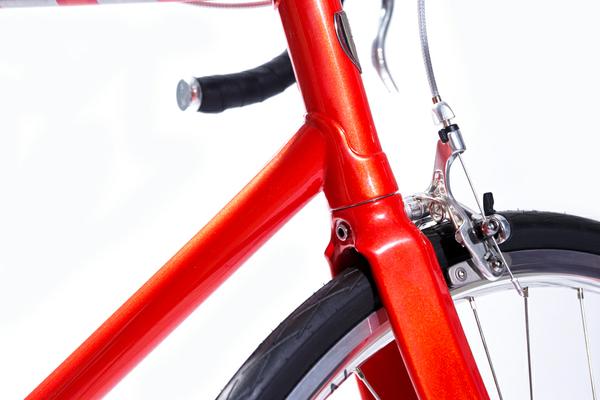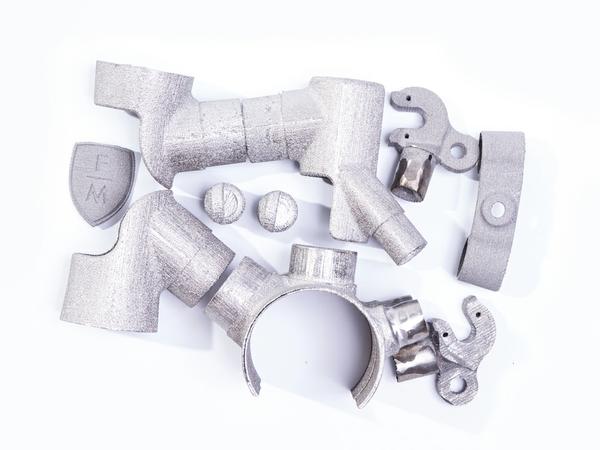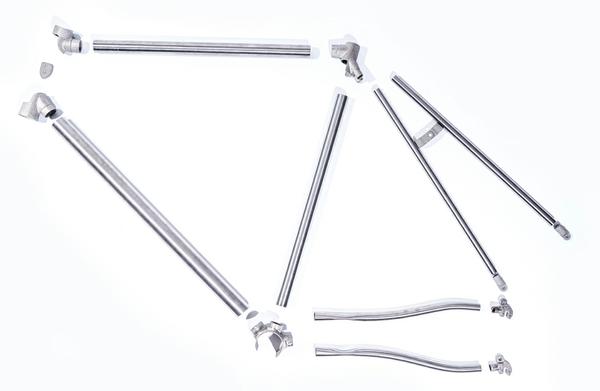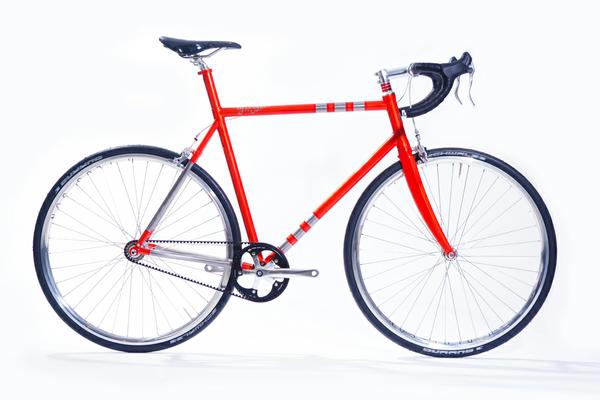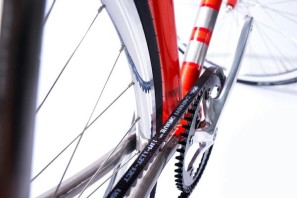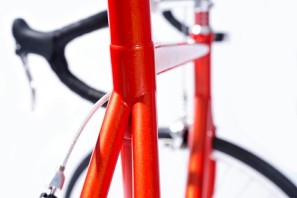For years the cycling industry has been focused on carbon fiber, but lately the use of an old material in a new way seems to be gaining a lot of attention. Specifically, the use of titanium loaded into a 3D printer to create complex shapes and create a bicycle faster, and with more control. While not quite as advanced as the recent Empire Cycles MX-6 full suspension bike with the first fully 3D printed titanium frame, Flying machine is taking a different approach with the 3DP-F1 and using the technology to create custom fit titanium road bikes.
Enlisting the help of CSIRO (the Commonwealth Science and Industrial Research Organization) and their Melbourne Australia based Titanium Technology division, Flying Machine is able to print out custom 6AIV4 Titanium lugs quickly and without a lot of waste. The process seems similar to Charge’s printed titanium dropouts, and is likely just the beginning to the 3D printed revolution.
The lugs are then joined to 3AL-2.5V titanium tubing using aerospace grade super toughened epoxy, sort of a modern, 3D printing brazing technique. The use of a lugged frame design allows Flying Machine to build the bikes to order, offering custom geometry frames in as little as 10 days, and complete bikes in 3 weeks. The printing of the lugs is carried out in Melbourne, while the frame building is finished in their Perth studio.
The prototype F1 above was created for Flying Machine’s owner Matt and to his exact measurements. Production bikes will be available in a number of options and colors like the rest of the beautiful rides in the Flying Machine Line up. Pricing and availability remains to be set, but anyone interested can email Flying Machine at communication@flyingmachine.com.au for more information.
Specs:
- Drivetrain – Gates Carbon Drive, Centretrack, 55 tooth front sprocket, 20 tooth rear
- Hubs – White Industries M15, titanium cassette with single speed spacer kit
- Rims – H + Son, Archetype
- Spokes – DT Swiss, Competition
- Tires – Schwalbe, Durano
- Saddle – Fizik, Aliante VS
- Handlebars – FM Custom
- Forks – FM Custom Carbon
- Bar Tape – Dipell, Competition, leather
- Bottom Bracket – Bushnell Featherweight eccentric, with White Industries Ti spindle BB
- Brakes – Tektro, R570 calipers with RL340 levers
